Differences in Urban Development in China from the Perspective of Point of Interest Spatial Co-Occurrence Patterns
Abstract
:1. Introduction
2. Study Area and Data Source
3. Methods
3.1. Multi-Granular Modeling of POI Spatial Co-Occurrence
3.1.1. Construction of a Multi-Granular POI Spatial Corpus
3.1.2. Learning the POI Spatial Co-Occurrence Based on the Multi-Granular POI Semantic Spaces
3.1.3. Urban Functional Representation Based on POI Co-Occurrence Matrix
3.2. Analysis of Disparities in Urban Development Levels among Different Tiers
3.2.1. Correlation Analysis between POI Spatial Co-Occurrence and GDPs
3.2.2. Constructing the Urban Hierarchy Based on the POI Co-Occurrence Matrix
3.2.3. Urban Hierarchical Disparity Index and Graph
4. Experiments and Analysis
4.1. A Case Study of Urban Function with POI Spatial Co-Occurrence
4.2. Significant Association between POI Spatial Co-Occurrence and Urban Development Level
4.3. Analysis of Urban Hierarchical Disparity
4.3.1. Urban Hierarchical Disparity Index
4.3.2. Rationality Analysis of Urban Hierarchical Disparity Matrix
4.3.3. Urban Hierarchical Disparity Graph
5. Discussion
6. Conclusions
Author Contributions
Funding
Data Availability Statement
Conflicts of Interest
References
- Chen, M.; Liu, W.; Tao, X. Evolution and Assessment on China’s Urbanization 1960–2010: Under-Urbanization or over-Urbanization? Habitat Int. 2013, 38, 25–33. [Google Scholar] [CrossRef]
- Xi, J. Secure a Decisive Victory in Building a Moderately Prosperous Society in All Respects and Strive for the Great Success of Socialism with Chinese Characteristics for a New Era. In Proceedings of the 19th National Congress of the Communist Party of China, Beijing, China, 18–24 October 2017; Volume 18, pp. 2011–2017. [Google Scholar]
- Cao, S.; Lv, Y.; Zheng, H.; Wang, X. Challenges Facing China’s Unbalanced Urbanization Strategy. Land Use Policy 2014, 39, 412–415. [Google Scholar] [CrossRef]
- Xu, J.; Li, A.; Li, D.; Liu, Y.; Du, Y.; Pei, T.; Ma, T.; Zhou, C. Difference of Urban Development in China from the Perspective of Passenger Transport around Spring Festival. Appl. Geogr. 2017, 87, 85–96. [Google Scholar] [CrossRef]
- Tan, Y.; Xu, H.; Zhang, X. Sustainable Urbanization in China: A Comprehensive Literature Review. Cities 2016, 55, 82–93. [Google Scholar] [CrossRef]
- Zhou, Y.; Guo, Y.; Liu, Y. High-Level Talent Flow and Its Influence on Regional Unbalanced Development in China. Appl. Geogr. 2018, 91, 89–98. [Google Scholar] [CrossRef]
- Zünd, D.; Bettencourt, L.M.A. Growth and Development in Prefecture-Level Cities in China. PLoS ONE 2019, 14, e0221017. [Google Scholar] [CrossRef]
- Manoli, G.; Fatichi, S.; Schläpfer, M.; Yu, K.; Crowther, T.W.; Meili, N.; Burlando, P.; Katul, G.G.; Bou-Zeid, E. Magnitude of Urban Heat Islands Largely Explained by Climate and Population. Nature 2019, 573, 55–60. [Google Scholar] [CrossRef]
- Chen, J.; Chen, J.; Miao, Y.; Song, M.; Fan, Y. Unbalanced Development of Inter-Provincial High-Grade Highway in China: Decomposing the Gini Coefficient. Transp. Res. Part Transp. Environ. 2016, 48, 499–510. [Google Scholar] [CrossRef]
- Chen, Y.; Chen, X.; Liu, Z.; Li, X. Understanding the Spatial Organization of Urban Functions Based on Co-Location Patterns Mining: A Comparative Analysis for 25 Chinese Cities. Cities 2020, 97, 102563. [Google Scholar] [CrossRef]
- Bettencourt, L.M.A. The Origins of Scaling in Cities. Science 2013, 340, 1438–1441. [Google Scholar] [CrossRef]
- Li, D.; Shan, J.; Shao, Z.; Zhou, X.; Yao, Y. Geomatics for Smart Cities-Concept, Key Techniques, and Applications. Geo-Spat. Inf. Sci. 2013, 16, 13–24. [Google Scholar] [CrossRef]
- Qian, J.; Liu, Z.; Du, Y.; Liang, F.; Yi, J.; Ma, T.; Pei, T. Quantify City-Level Dynamic Functions across China Using Social Media and POIs Data. Comput. Environ. Urban Syst. 2021, 85, 101552. [Google Scholar] [CrossRef]
- Liu, Z.; Liu, H.; Lang, W.; Fang, S.; Chu, C.; He, F. Scaling Law Reveals Unbalanced Urban Development in China. Sustain. Cities Soc. 2022, 87, 104157. [Google Scholar] [CrossRef]
- Guan, Q.; Zhou, J.; Wang, R.; Yao, Y.; Qian, C.; Zhai, Y.; Ren, S. Understanding China’s Urban Functional Patterns at the County Scale by Using Time-Series Social Media Data. J. Spat. Sci. 2022, 68, 631–649. [Google Scholar] [CrossRef]
- Huang, W.; Cui, L.; Chen, M.; Zhang, D.; Yao, Y. Estimating Urban Functional Distributions with Semantics Preserved POI Embedding. Int. J. Geogr. Inf. Sci. 2022, 36, 1905–1930. [Google Scholar] [CrossRef]
- Mei, Y.; Gui, Z.; Wu, J.; Peng, D.; Li, R.; Wu, H.; Wei, Z. Population Spatialization with Pixel-Level Attribute Grading by Considering Scale Mismatch Issue in Regression Modeling. Geo-Spat. Inf. Sci. 2022, 25, 365–382. [Google Scholar] [CrossRef]
- Aslam, N.S.; Ibrahim, M.R.; Cheng, T.; Chen, H.; Zhang, Y. ActivityNET: Neural Networks to Predict Public Transport Trip Purposes from Individual Smart Card Data and POIs. Geo-Spat. Inf. Sci. 2021, 24, 711–721. [Google Scholar] [CrossRef]
- Liu, Z.; Chen, X.; Xu, W.; Chen, Y.; Li, X. Detecting Industry Clusters from the Bottom up Based on Co-Location Patterns Mining: A Case Study in Dongguan, China. Environ. Plan. B Urban Anal. City Sci. 2021, 48, 2827–2841. [Google Scholar] [CrossRef]
- Gao, S.; Janowicz, K.; Couclelis, H. Extracting Urban Functional Regions from Points of Interest and Human Activities on Location-based Social Networks. Trans. GIS 2017, 21, 446–467. [Google Scholar] [CrossRef]
- Li, T.; Zheng, X.; Zhang, C.; Wang, R.; Liu, J. Mining Spatial Correlation Patterns of the Urban Functional Areas in Urban Agglomeration: A Case Study of Four Typical Urban Agglomerations in China. Land 2022, 11, 870. [Google Scholar] [CrossRef]
- Ma, S.; Long, Y. Functional Urban Area Delineations of Cities on the Chinese Mainland Using Massive Didi Ride-Hailing Records. Cities 2020, 97, 102532. [Google Scholar] [CrossRef]
- Zhai, W.; Bai, X.; Shi, Y.; Han, Y.; Peng, Z.-R.; Gu, C. Beyond Word2vec: An Approach for Urban Functional Region Extraction and Identification by Combining Place2vec and POIs. Comput. Environ. Urban Syst. 2019, 74, 1–12. [Google Scholar] [CrossRef]
- Dong, G.; Li, R.; Wu, H.; Huang, W.; Zhang, H.; Tao, V.; Liu, Q. Learning the Spatial Co-Occurrence for Browsing Interests Extraction of Domain Users on Public Map Service Platforms. Geo-Spat. Inf. Sci. 2022, 1–20. [Google Scholar] [CrossRef]
- Goodchild, M.F. Commentary: General Principles and Analytical Frameworks in Geography and GIScience. Ann. GIS 2022, 28, 85–87. [Google Scholar] [CrossRef]
- Xue, B.; Xiao, X.; Li, J. Identification Method and Empirical Study of Urban Industrial Spatial Relationship Based on POI Big Data: A Case of Shenyang City, China. Geogr. Sustain. 2020, 1, 152–162. [Google Scholar] [CrossRef]
- Cardoso, R.V.; Meijers, E.J. Contrasts between First-Tier and Second-Tier Cities in Europe: A Functional Perspective. Eur. Plan. Stud. 2016, 24, 996–1015. [Google Scholar] [CrossRef]
- Hu, S.; He, Z.; Wu, L.; Yin, L.; Xu, Y.; Cui, H. A Framework for Extracting Urban Functional Regions Based on Multiprototype Word Embeddings Using Points-of-Interest Data. Comput. Environ. Urban Syst. 2020, 80, 101442. [Google Scholar] [CrossRef]
- Zhang, X.; Li, W.; Zhang, F.; Liu, R.; Du, Z. Identifying Urban Functional Zones Using Public Bicycle Rental Records and Point-of-Interest Data. ISPRS Int. J. Geo-Inf. 2018, 7, 459. [Google Scholar] [CrossRef]
- Zeroual, I.; Lakhouaja, A. MulTed: A Multilingual Aligned and Tagged Parallel Corpus. Appl. Comput. Inform. 2020, 18, 61–73. [Google Scholar] [CrossRef]
- Tobler, W.R. A Computer Movie Simulating Urban Growth in the Detroit Region. Econ. Geogr. 1970, 46, 234–240. [Google Scholar] [CrossRef]
- Liu, K.; Yin, L.; Lu, F.; Mou, N. Visualizing and Exploring POI Configurations of Urban Regions on POI-Type Semantic Space. Cities 2020, 99, 102610. [Google Scholar] [CrossRef]
- Chen, J.; Chen, Q.; Liu, X.; Yang, H.; Lu, D.; Tang, B. The Bq Corpus: A Large-Scale Domain-Specific Chinese Corpus for Sentence Semantic Equivalence Identification. In Proceedings of the 2018 Conference on Empirical Methods in Natural Language Processing, Brussels, Belgium, 31 October–4 November 2018; Association for Computational Linguistics: Kerrville, TX, USA, 2018; pp. 4946–4951. [Google Scholar]
- Yao, Y.; Li, X.; Liu, X.; Liu, P.; Liang, Z.; Zhang, J.; Mai, K. Sensing Spatial Distribution of Urban Land Use by Integrating Points-of-Interest and Google Word2Vec Model. Int. J. Geogr. Inf. Sci. 2017, 31, 825–848. [Google Scholar] [CrossRef]
- Liu, X.; Andris, C.; Rahimi, S. Place Niche and Its Regional Variability: Measuring Spatial Context Patterns for Points of Interest with Representation Learning. Comput. Environ. Urban Syst. 2019, 75, 146–160. [Google Scholar] [CrossRef]
- Hu, Z.; Wu, G.; Han, Y.; Niu, Y. Unraveling the Dynamic Changes of High-Speed Rail Network with Urban Development: Evidence from China. Socioecon. Plann. Sci. 2023, 85, 101380. [Google Scholar] [CrossRef]
- Jin, X.; Long, Y.; Sun, W.; Lu, Y.; Yang, X.; Tang, J. Evaluating Cities’ Vitality and Identifying Ghost Cities in China with Emerging Geographical Data. Cities 2017, 63, 98–109. [Google Scholar] [CrossRef]
- McKenzie, G.; Romm, D. Measuring Urban Regional Similarity through Mobility Signatures. Comput. Environ. Urban Syst. 2021, 89, 101684. [Google Scholar] [CrossRef]
- Van der Maaten, L.; Hinton, G. Visualizing Data Using T-SNE. J. Mach. Learn. Res. 2008, 9, 2579–2605. [Google Scholar]

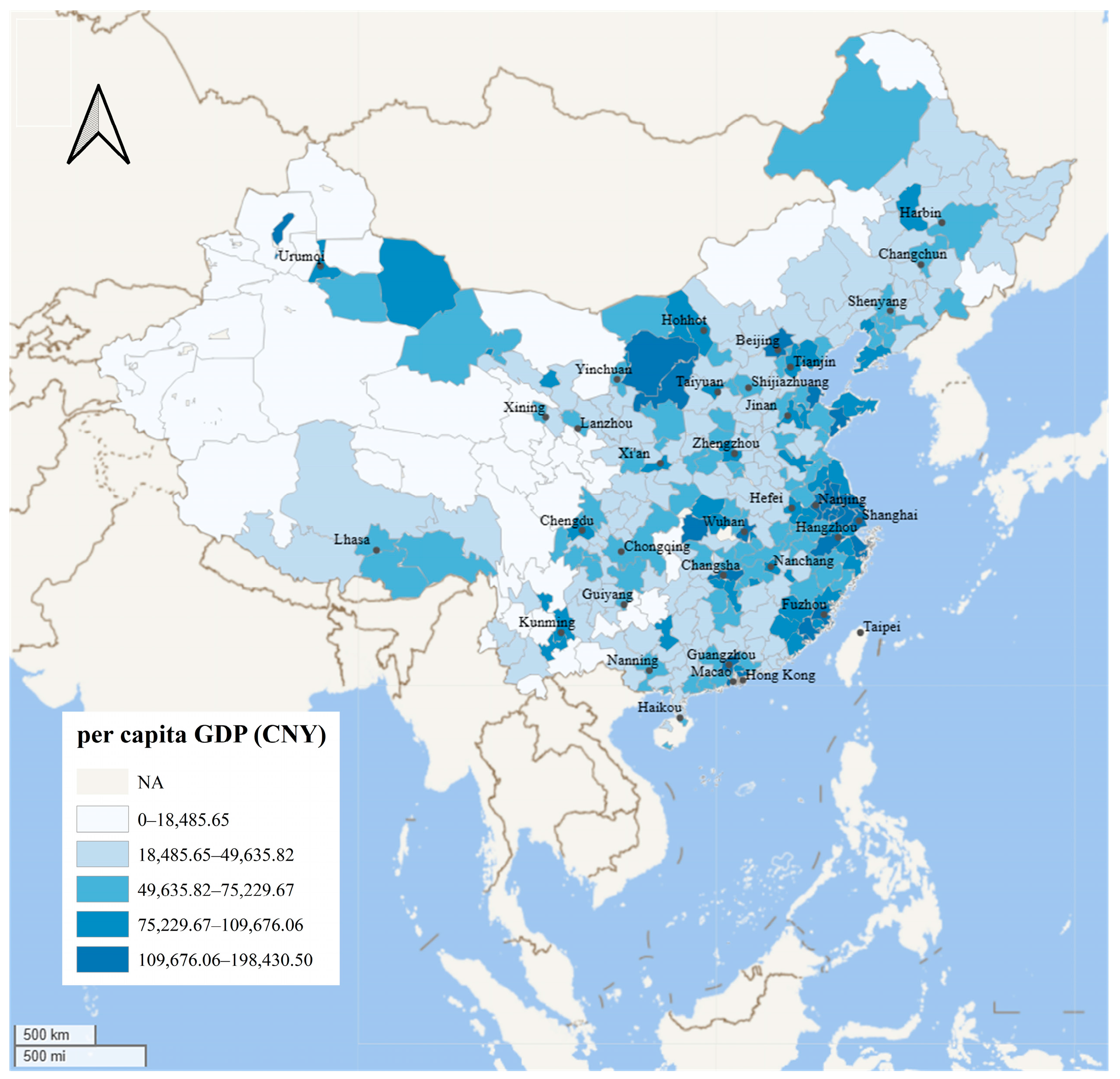
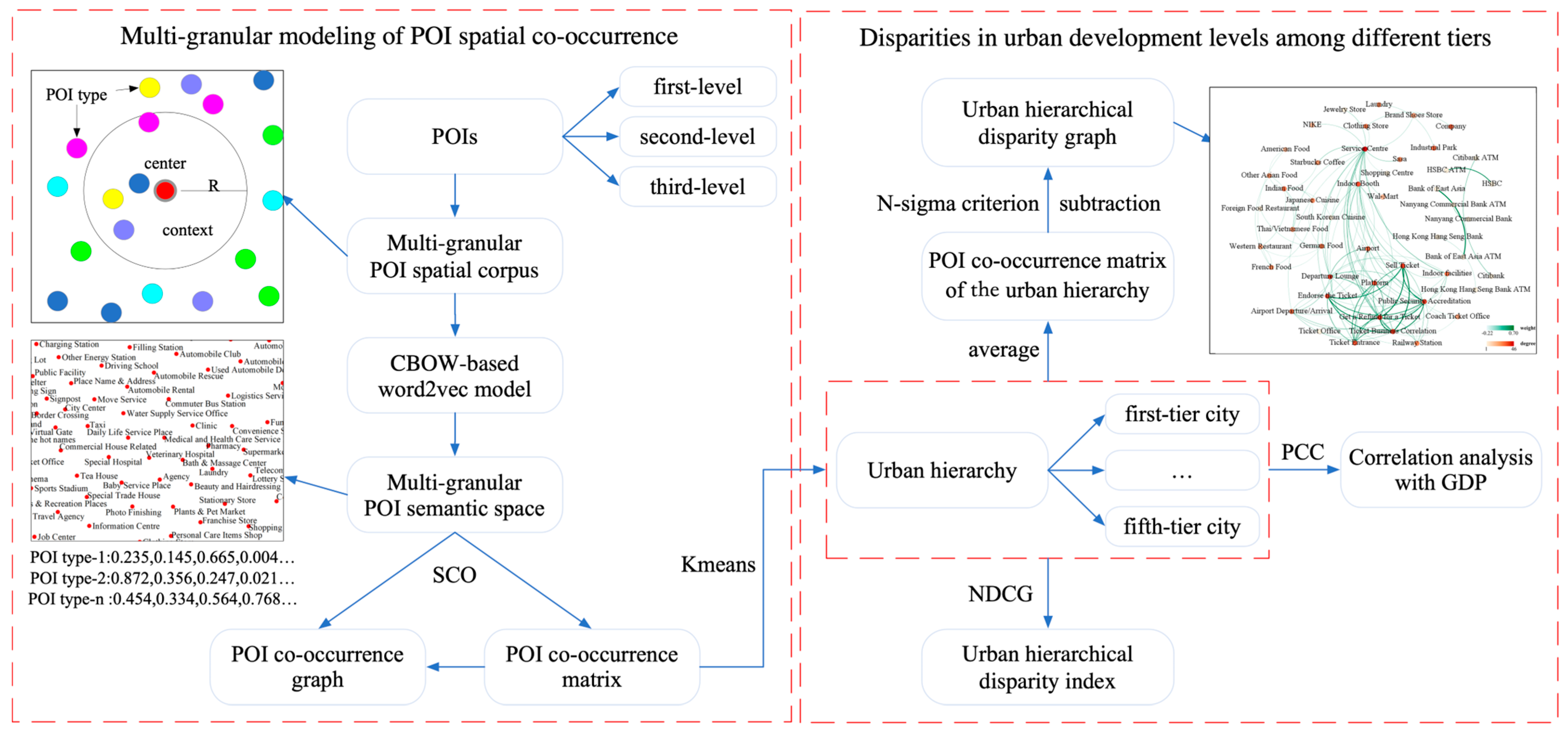

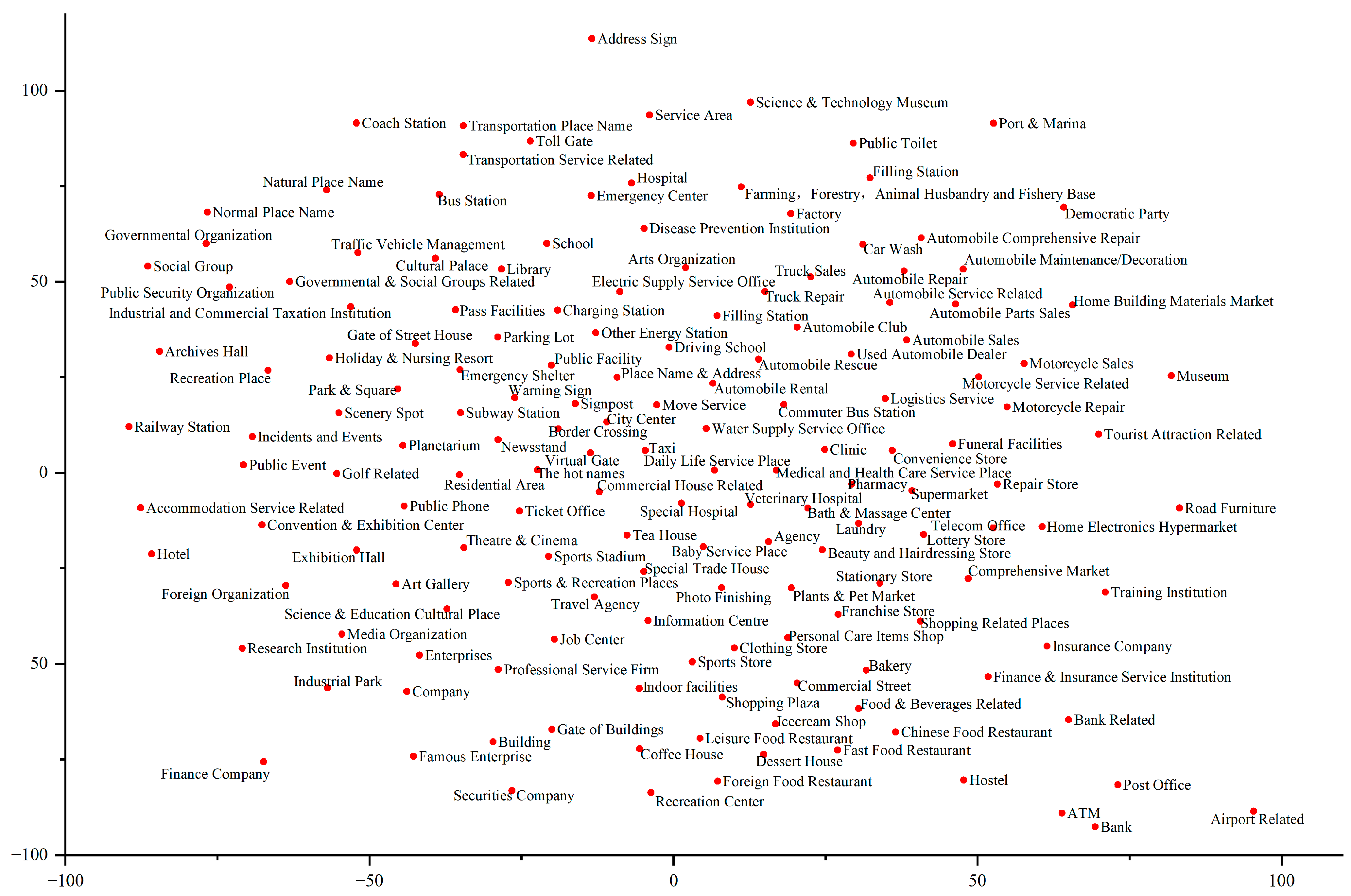
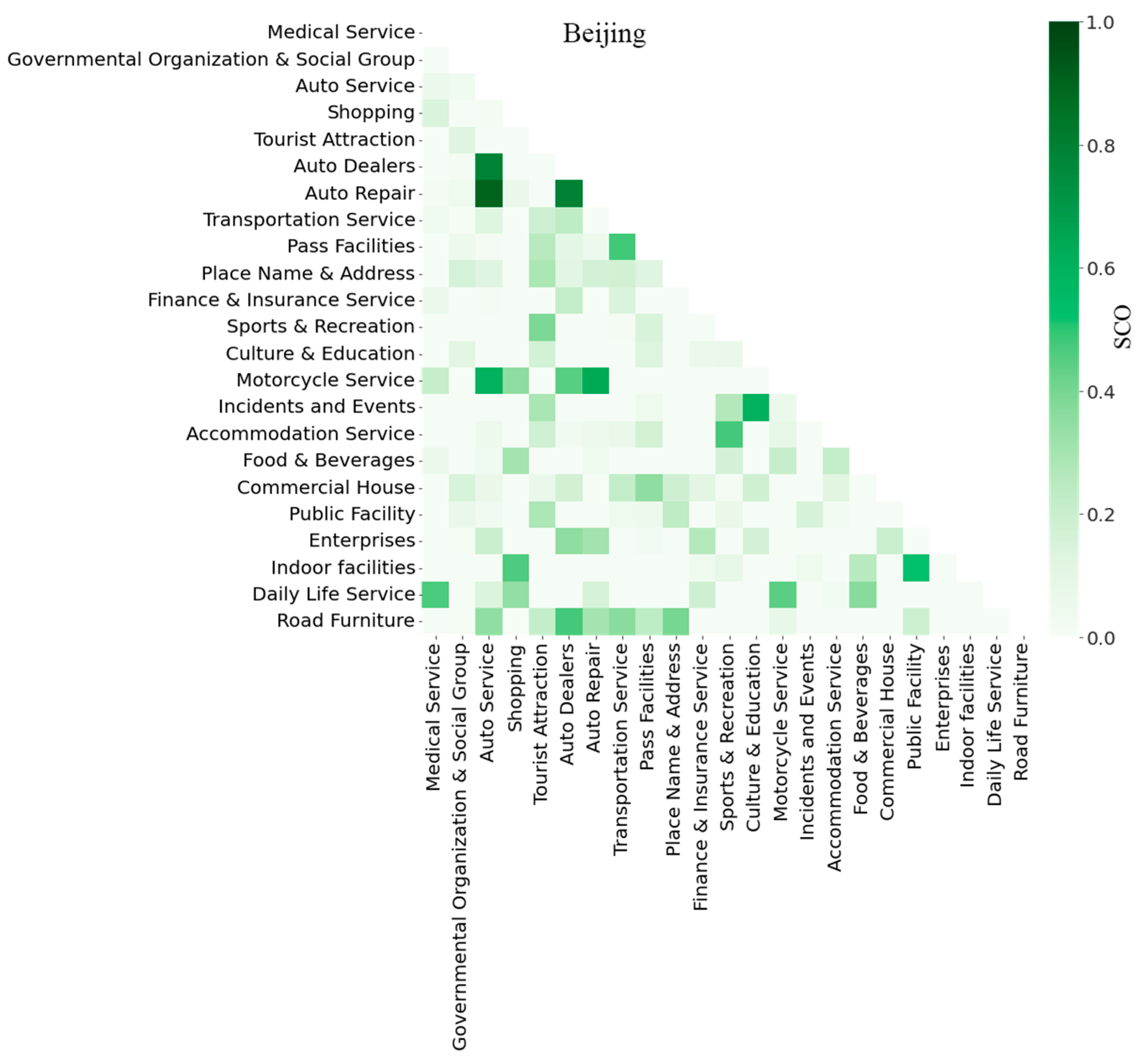
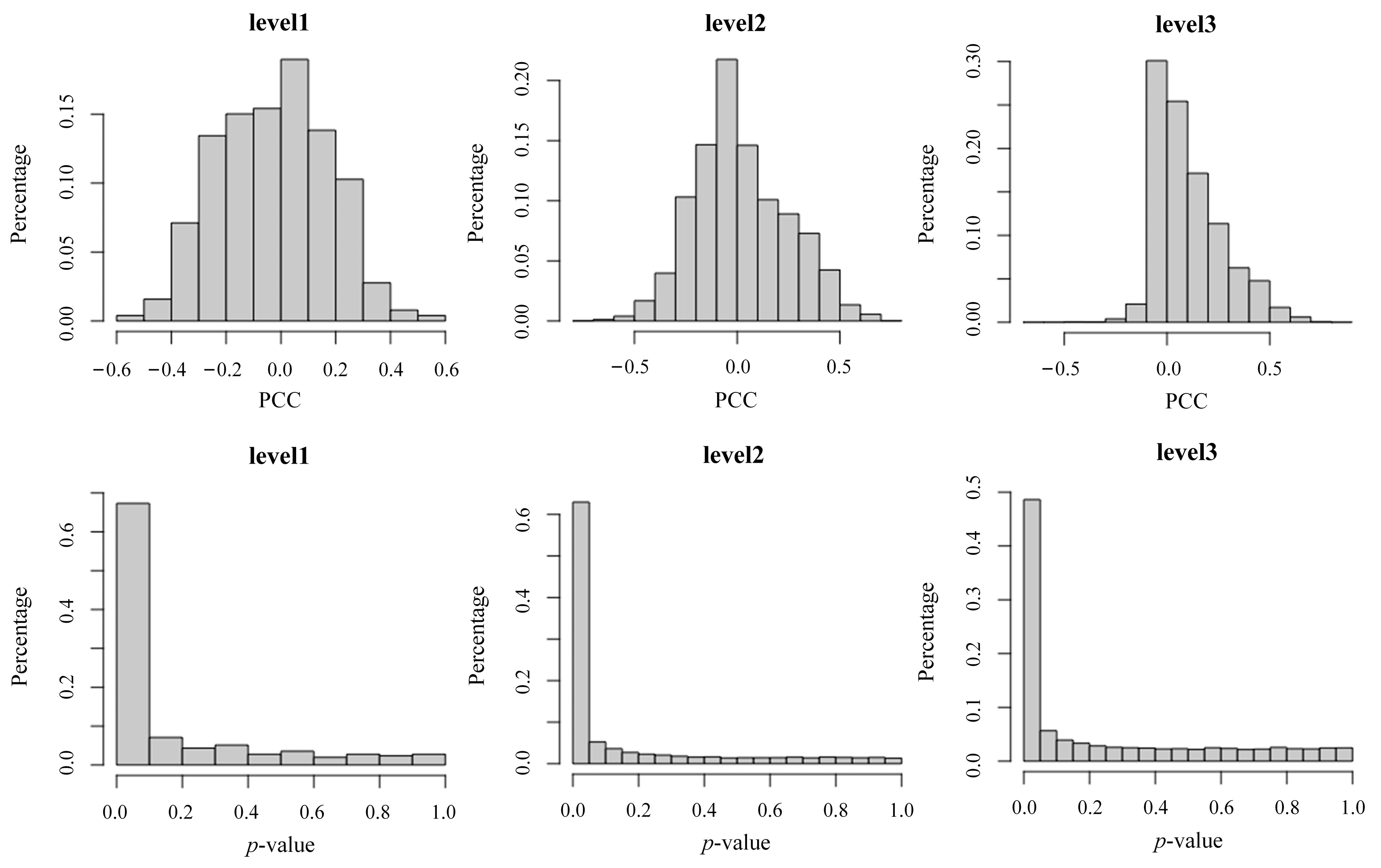

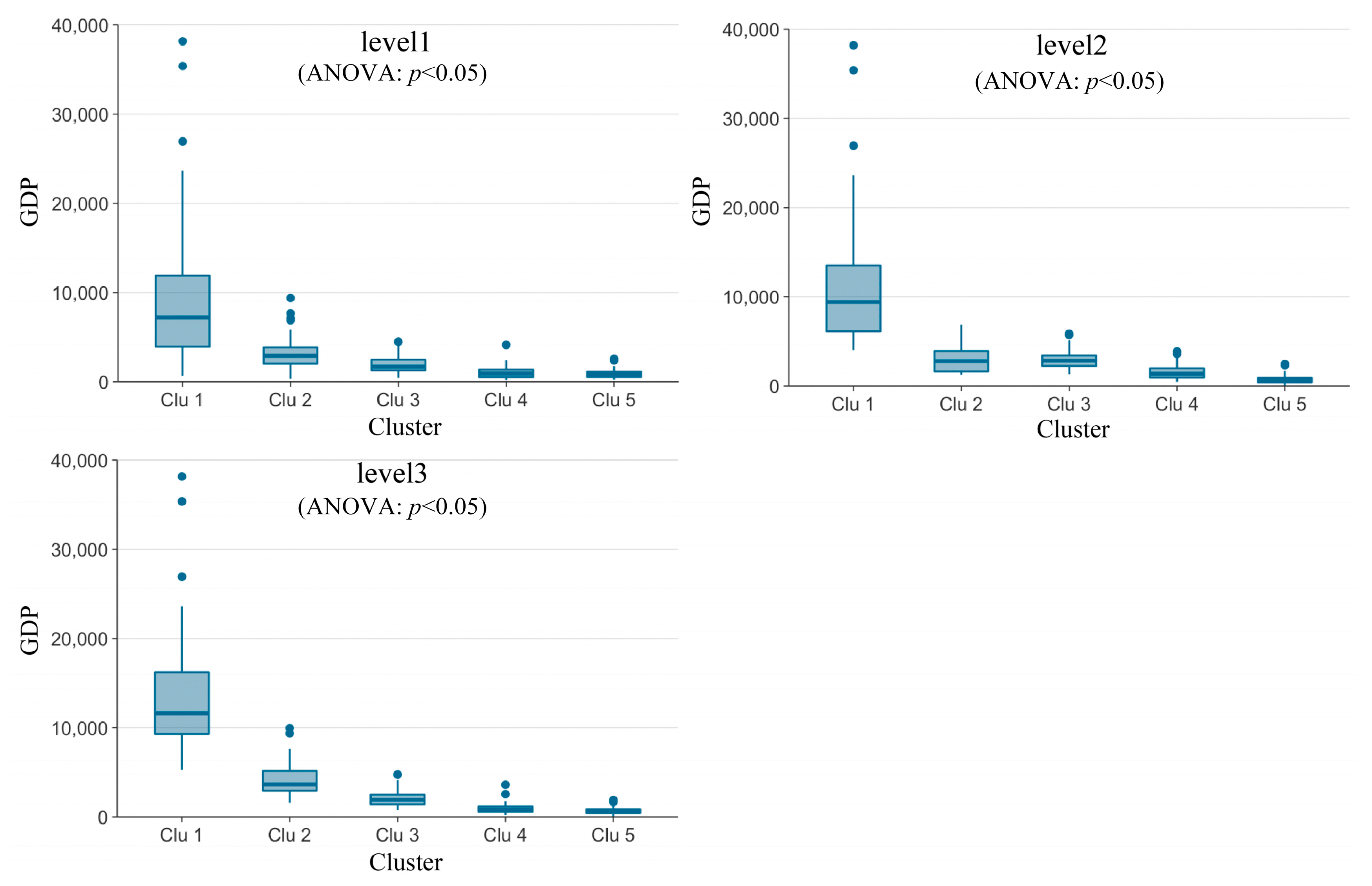
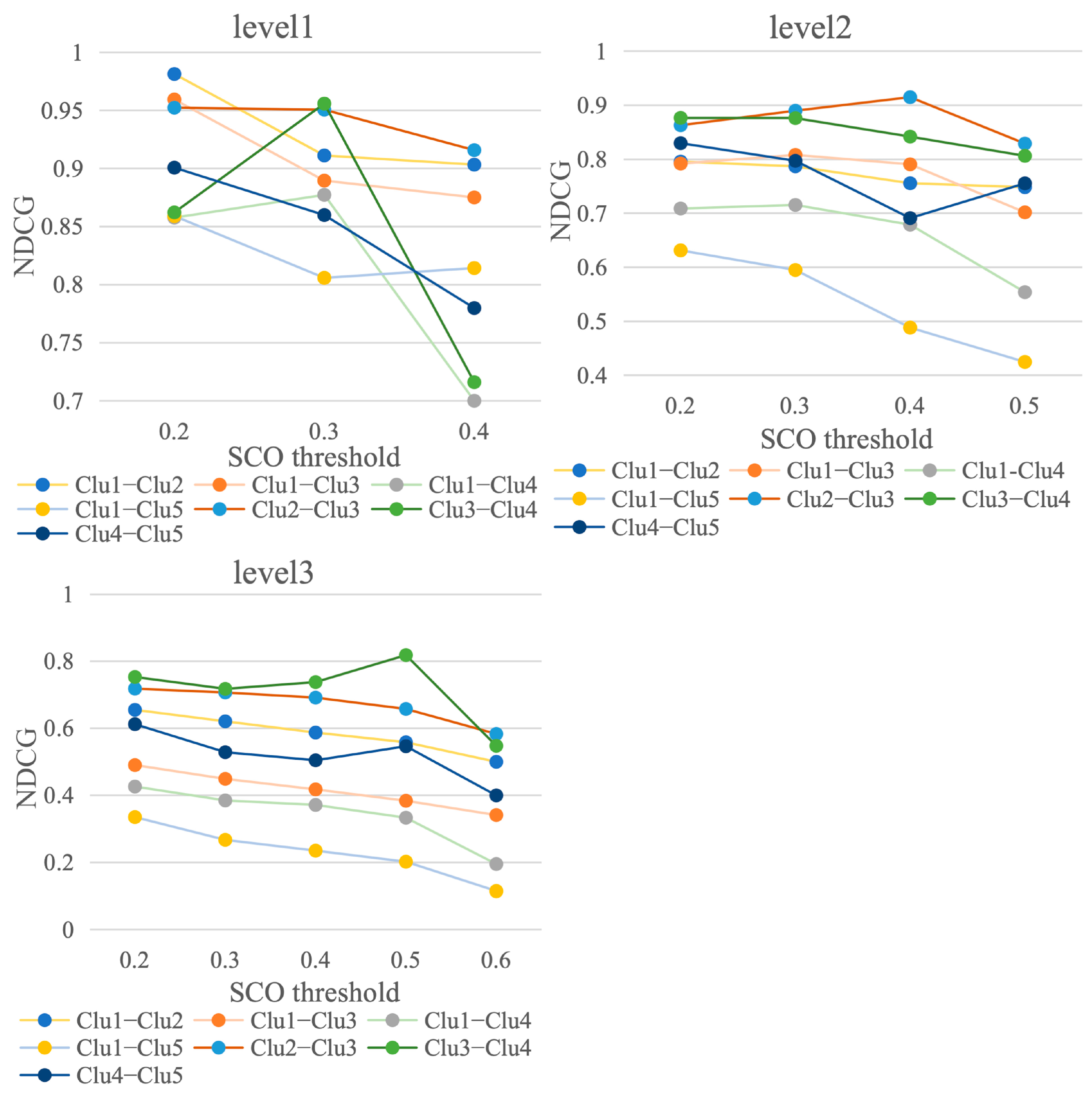
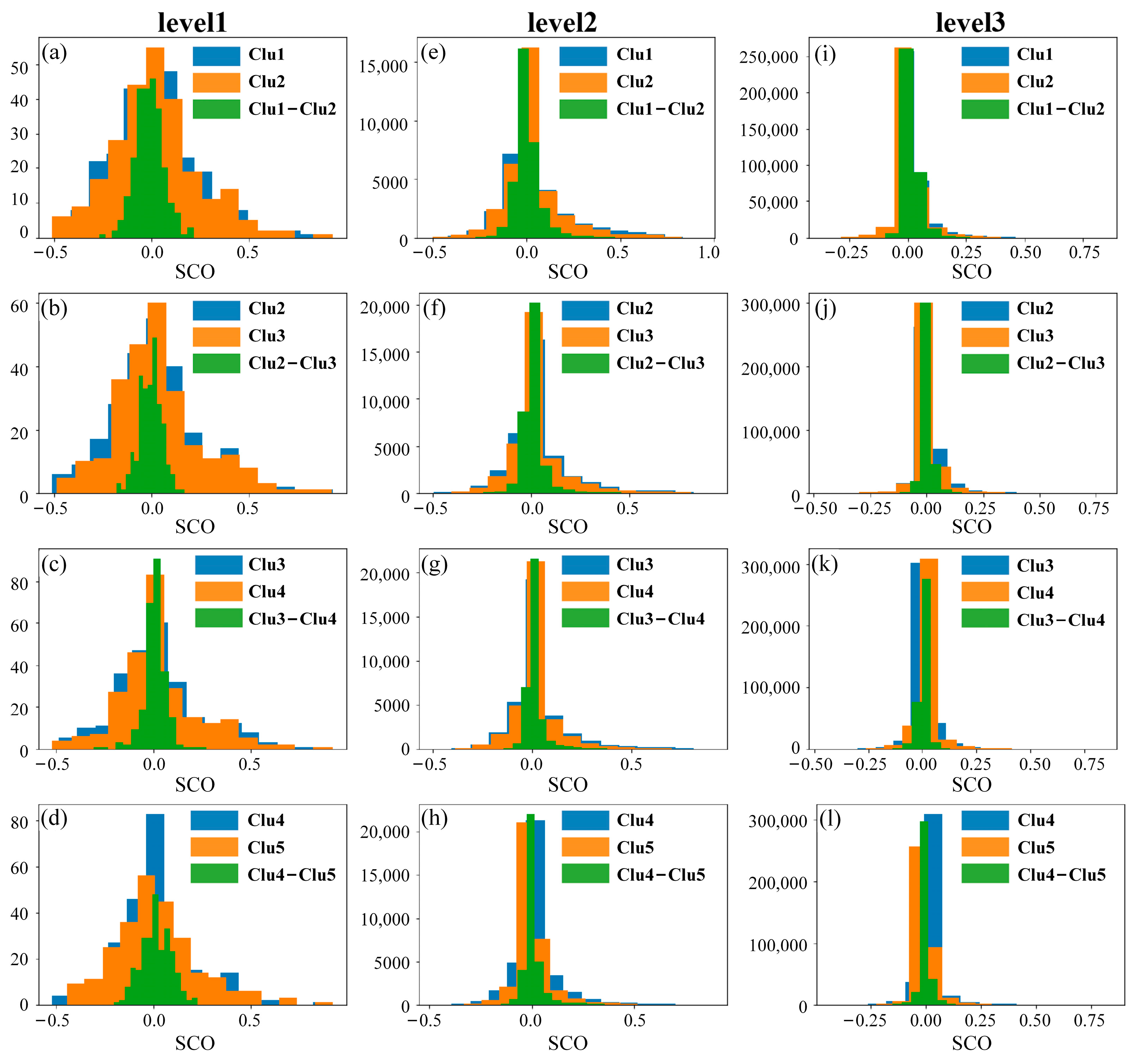

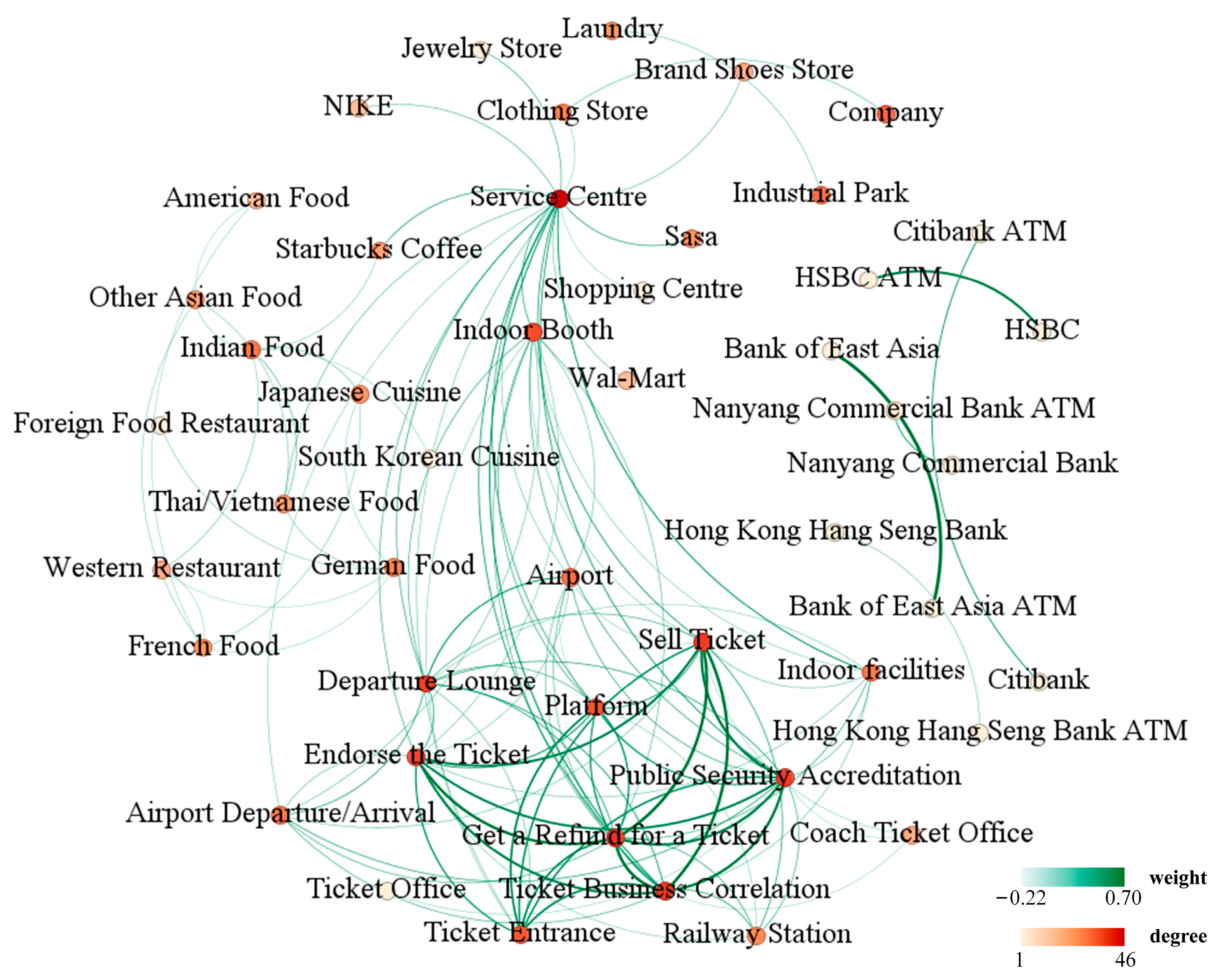


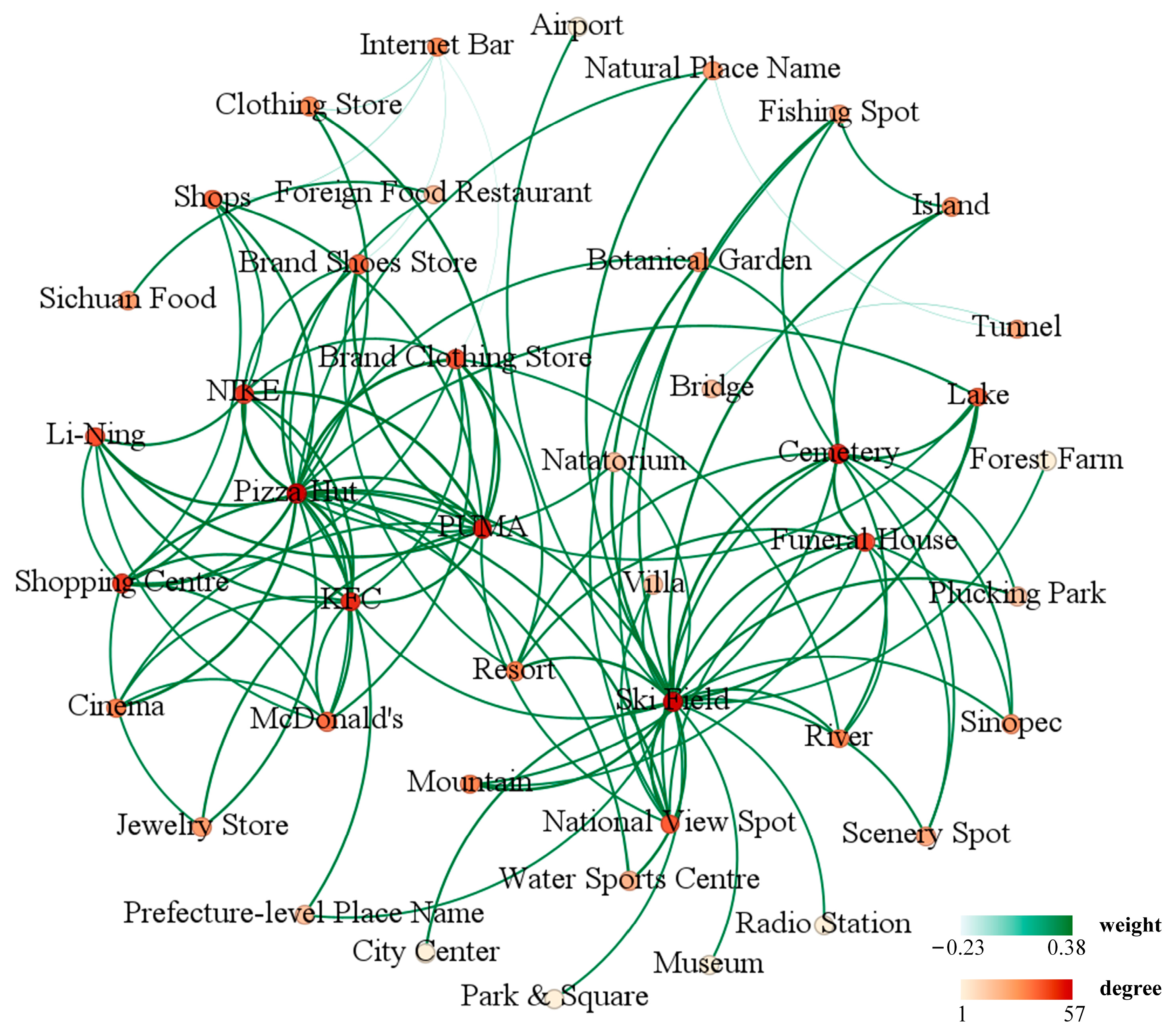
| First Level (Level 1) | Second Level (Level 2) | Third Level (Level 3) |
|---|---|---|
| Auto Dealers | Toyota Franchised Sales | Toyota Sales |
| Auto Repair | Chrysler Franchised Repair | Jeep Repair |
| Motorcycle Service | Motorcycle Sales | BMW Motorcycle Sales |
| Food and Beverages | Chinese Food Restaurant | Shanghai Food |
| Shopping | Supermarket | Wal-Mart |
| Daily Life Service | Information Centre | Enquire of Hotel |
| Sports and Recreation | Sports Stadium | Gym Center |
| Medical Service | Special Hospital | Special Hospital |
| Accommodation Service | Hotel | Five-star Hotel |
| Tourist Attraction | Park and Square | Park |
| Commercial House | Building | Commercial-residential Building |
| Governmental Organization and Social Group | Governmental Organization | State Level Organization and Institution |
| Science/Culture and Education Service | Media Organization | TV Station |
| Culture and Education | School | Facilities within the School |
| Transportation Service | Parking Lot | Public Parking Lot |
| Finance and Insurance Service | ATM | Bank of China ATM |
| Enterprises | Company | Network Science and Technology |
| Road Furniture | Warning Sign | Camera |
| Place Name and Address | Normal Place Name | Country Name |
| Public Facility | Public Toilet | Public Toilet |
| Incidents and Events | Public Event | Conference |
| Indoor facilities | Indoor facilities | Indoor facilities |
| Pass Facilities | Gate of Buildings | Main Gate of Buildings |
| Clu1 | Clu2 | Clu3 | Clu4 | Clu5 |
|---|---|---|---|---|
| Shanghai | Taiyuan | Fuyang | Datong | Tianshui |
| Beijing | Nanchang | Hengshui | Tongliao | Yan’an |
| Chengdu | Jinhua | Luan | Xining | Baoshan |
| Tianjin | Quanzhou | Bengbu | Jilin | Bazhong |
| Hefei | Guiyang | Dezhou | Anshan | Panzhihua |
| Jinan | Yantai | Zaozhuang | Daqing | Baise |
| Qingdao | Nantong | Tai’an | Ordos | Hami |
| Dongguan | Xuzhou | Liaocheng | Hebi | Zhangye |
| Foshan | Luoyang | Heze | Panjin | Wuwei |
| Guangzhou | Taizhou | Shantou | Yingkou | Baiyin |
| Shenzhen | Jiaxing | Nanyang | Huludao | Jiuquan |
| Nanjing | Shaoxing | Shangqiu | Yangquan | Lhasa |
| Wuxi | Baotou | Anyang | Hulunbuir | Anshun |
| Suzhou | Changchun | Jiaozuo | Bayannaoer | Bijie |
| Zhengzhou | Lanzhou | Xuchang | Siping | Tongren |
| Ningbo | Linyi | Zhangzhou | Songyuan | Qingyang |
| Hangzhou | Jining | Leshan | Chaoyang | Sanya |
| Wuhan | Baoding | Deyang | Jinzhou | Zhongwei |
| Changsha | Tangshan | Anqing | Fuxin | Ankang |
| Xiamen | Langfang | Linfen | Jiamusi | Lincang |
| Fuzhou | Zhangjiakou | Changzhi | Mudanjiang | Lijiang |
| Dalian | Cangzhou | Qingyuan | Suihua | Zhaotong |
| Shenyang | Qinhuangdao | Zhanjiang | Qiqihar | Pu’er |
| Chongqing | Xingtai | Shangrao | Fushun | Ya’an |
| Xi’an | Handan | Jiujiang | Ulanqab | Wuzhong |
| Harbin | Hohhot | Ganzhou | Dandong | Congzuo |
| Shijiazhuang | Yinchuan | Xinyang | Shizuishan | Laibin |
Disclaimer/Publisher’s Note: The statements, opinions and data contained in all publications are solely those of the individual author(s) and contributor(s) and not of MDPI and/or the editor(s). MDPI and/or the editor(s) disclaim responsibility for any injury to people or property resulting from any ideas, methods, instructions or products referred to in the content. |
© 2024 by the authors. Licensee MDPI, Basel, Switzerland. This article is an open access article distributed under the terms and conditions of the Creative Commons Attribution (CC BY) license (https://creativecommons.org/licenses/by/4.0/).
Share and Cite
Dong, G.; Li, R.; Li, F.; Liu, Z.; Wu, H.; Xiang, L.; Yu, W.; Jiang, J.; Zhang, H.; Li, F. Differences in Urban Development in China from the Perspective of Point of Interest Spatial Co-Occurrence Patterns. ISPRS Int. J. Geo-Inf. 2024, 13, 24. https://doi.org/10.3390/ijgi13010024
Dong G, Li R, Li F, Liu Z, Wu H, Xiang L, Yu W, Jiang J, Zhang H, Li F. Differences in Urban Development in China from the Perspective of Point of Interest Spatial Co-Occurrence Patterns. ISPRS International Journal of Geo-Information. 2024; 13(1):24. https://doi.org/10.3390/ijgi13010024
Chicago/Turabian StyleDong, Guangsheng, Rui Li, Fa Li, Zhaohui Liu, Huayi Wu, Longgang Xiang, Wensen Yu, Jie Jiang, Hongping Zhang, and Fangning Li. 2024. "Differences in Urban Development in China from the Perspective of Point of Interest Spatial Co-Occurrence Patterns" ISPRS International Journal of Geo-Information 13, no. 1: 24. https://doi.org/10.3390/ijgi13010024





